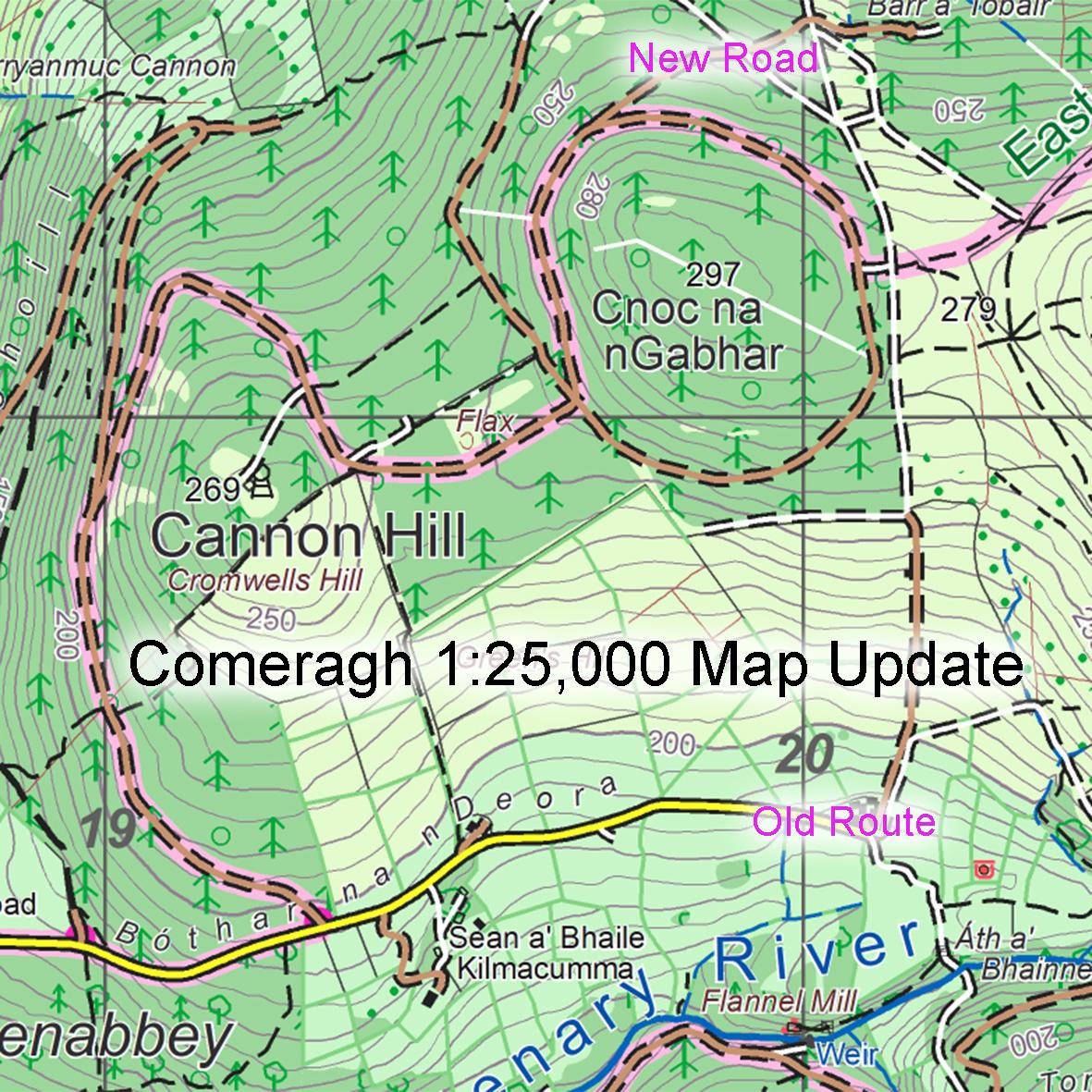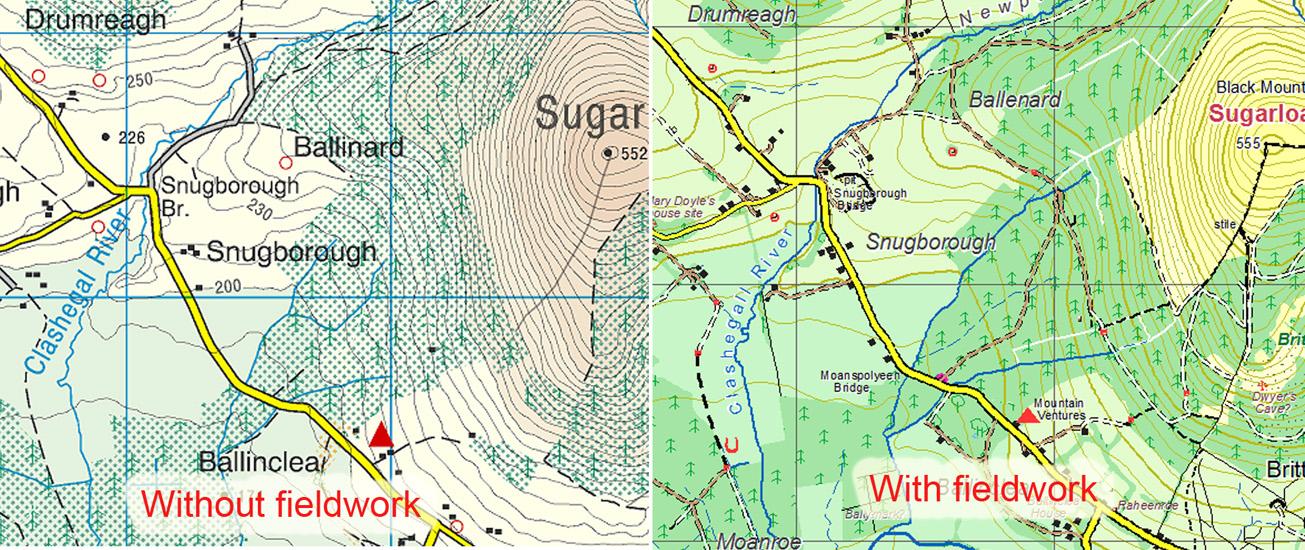Moanvayn ~ Moanbane
This photo shows the principle hill names above Ballyknockan in Co.Wicklow, as far as I can ascertain them. The main bulk of the hill goes by the name Moanvayn or Moanbane if you prefer the OS spelling.
The local pronunciation remains Moanvayn as in Moan-vayn or Moan-vain or Moan-vane. If we accept Michael O’Connor’s 1938 notes, this likely dates back to the late 1800s and probably for a lot longer. The usually accepted Irish origin of the name is Móin Bhán – the white or pale bog, see Price or www.logainm.ie
However if this were the case, you would expect an anglicised version like Moanvawn or Moanvaun etc. Bán or Bhán is a very common Irish word in placenames, well understood and ‘translated’ consistently as ‘vawn’ or ‘vaun’ in many instances, so is less likely to have been corrupted into ‘vayn’ by local people.
I don’t think anyone can know with certainty as things stand as to what the origin is, however I would put forward a theory that the form and pronunciation is quite similar to the Scots Gaelic construct used in Scotland for the various hills called Garbh Bheinn – there meaning the ‘rough hill’. Bheinn in this use is a form of Binn or Beann, found notably in the Twelve Bens but also near Baravore in Wicklow in Benleagh and Bendoo. If this construct applies to Moanvayn, it simply means ‘the boggy or peaty hill’, which matches the ground conditions well. The ‘problem’ with this is that the adjective normally follows the noun in Gaeilge, so you might expect something like Benamona – however there are instances where this normal construct is reversed and this may apply here.
In conclusion, the local pronunciation is Moanvayn. It may come from Móin Bhán, meaning the white or pale bog, maybe a reference to bog cotton. Or if we follow the pronunciation, it may be from Móin Bheinn, meaning the boggy or peaty hill.




